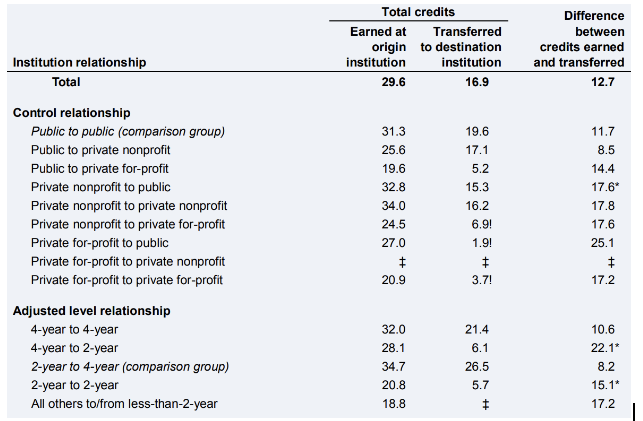

If you are a student attending a community college, are you aware of how your credits might transfer to a four-year college?
Planning for a smooth transfer process can be difficult for students and their families. Without having undergone the process before, you may be confused about how the process works.
I’m a second-year student at Sandhills Community College (SCC). I started my educational journey in visual arts then quickly pivoted to digital media technology. This degree path sparked my passion for digital graphics, print media, and information technology. Since my first semester, my goal has been to transfer from SCC to a four-year university and finish my bachelor’s degree, and then earn a master’s degree in new media communications.
However, it was not until recently that I understood how difficult it was to transfer with my particular degree path. Unlike the visual arts pathway, which leads to an Associate in Fine Arts degree, digital media technology falls under an Associate in Applied Science (AAS). It was this simple change to my paperwork that made a far larger impact on my ability to transfer to a four-year university than I originally understood. Unfortunately, this change would set me back in credits, consume more of my financial aid, and make my transfer process more difficult overall.
After experiencing the frustrating reality of my predicament, I realized just how little I understood about the transfer process. It had always seemed complicated, but I naively assumed that simply taking classes following a degree pathway would ensure a smooth transfer process. I soon learned why a majority of credits from my degree did not transfer to four-year colleges.
How do articulation agreements smooth the process?
Typically, a bachelor’s degree requires general education courses be completed before students can proceed to coursework in their chosen major.
An Associate in Arts (AA) or an Associate in Science (AS) from a community college will often fulfill the required general education courses, because they generally meet what is called an articulation agreement. This agreement between two or more institutions forms a pathway for a smooth student transfer. Generally, this is the easiest way to transfer.
According to the North Carolina Community College System, the North Carolina Comprehensive Articulation Agreement smooths the process by guaranteeing students from a North Carolina community college who obtain an Associate in Arts or Science and achieve a C or better in their coursework both admission and junior status to one of North Carolina’s 16 public universities. However, even then, the chosen school may not be a school of interest to the student.
Beyond this agreement, some community colleges have their own direct articulation agreements with particular universities. Because my degree path is working towards an Associate in Applied Science, I am unable to use North Carolina’s articulation agreement, and my school does not currently offer its own transfer agreement for my degree. After discussing my options with my advisors, my current plan is to complete my remaining credits in my degree path and take additional courses from the Associate in Arts pathway.
By the time I finish this new plan, I will have a total of 124 credits — and I will finally fulfill my general education requirements as outlined by the articulation agreement. Otherwise, I would risk losing a majority of my credits and transferring as a first-year rather than a third-year student. This setback would cost me more time and money.
Financial aid and transferring
If you are already enrolled in a pathway that does not lead to an AA or AS, but intend to take additional classes from the Associate in Arts or Science pathways to qualify for an articulation agreement, then you may want to understand how this could affect your financial aid.
If you receive Federal Pell Grant funds, this grant will only cover one degree at a time. That means you cannot designate that you are pursuing two degrees at once. However, regardless of how you pay for the additional AA or AS degree, you will still need to maintain your Satisfactory Academic Progress (SAP) to remain eligible to receive the aid.
According to the U.S. Department of Education, students that receive financial aid are required to complete their credit hours within 150% of the required time. This means that if your degree requires 60 credit hours, you must graduate before you reach 90 credit hours in order to stay eligible for financial aid. In order to continue to receive financial aid, you must appeal your eligibility with your school’s financial aid office and submit an Academic Plan detailing the classes needed to graduate. The exact policy regarding your SAP and appeal process changes per institution.
Currently, my financial aid is being applied to my AAS degree, which requires 66 credit hours. However, because I am taking additional AA classes, I have already completed 63 credit hours and can only use a maximum of 99 credit hours before I am ineligible for financial aid.
Although financial aid is not being used towards my AA degree, each additional credit from the Associate in Arts pathway will use up my remaining credits needed to show Satisfactory Academic Progress. This means that before I graduate in the summer of 2023 with a total of 124 credits, I will need to appeal my financial aid completion limit and request more time to finish every semester, risking the chance of being denied.
So why does your degree pathway matter?
Students that want to take advantage of the many benefits of a community college should be aware of how their credits transfer if they plan to attend a four-year institution. Transferring from a community college to a four-year institution is complex at best. If a degree is not part of an articulation agreement, the number of transferable credits varies depending on the individual courses of the community college and transfer institution.
According to a study by the National Center for Educational Statistics, students transferring from a two-year to four-year institution lose, on average, more than 23% of credits.


Students who wish to pursue degrees other than an Associate in Arts or Science are sometimes best equipped to start immediately in the workforce.
Using my own story as an example, if a student is interested in continuing into a Bachelor in Applied Science at a four-year university, it is important to make sure that your institution offers a direct Applied Science Transfer Agreement to guarantee a successful transfer process.
Regardless of the degree you are pursuing, keeping in contact with the advisors at your institution and the institution you plan to transfer to can help keep you on track.




